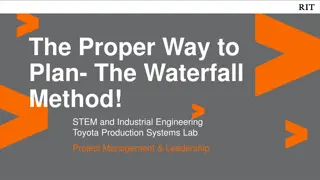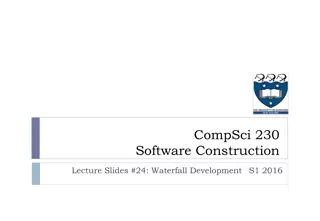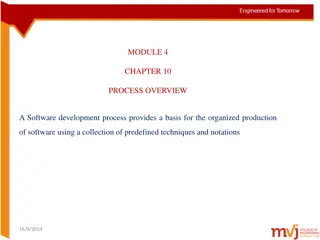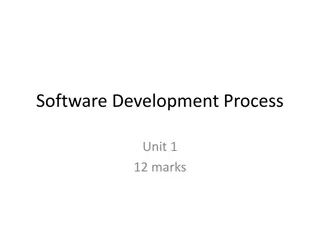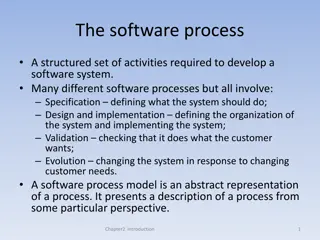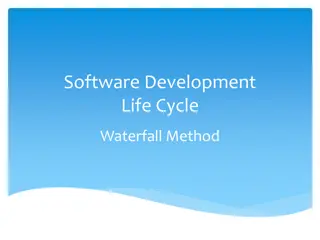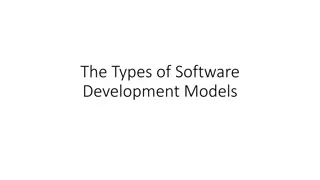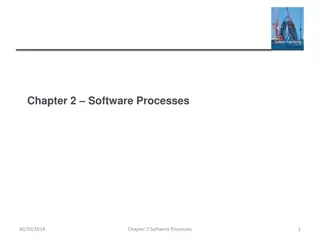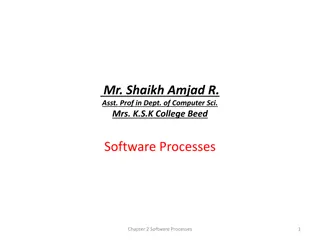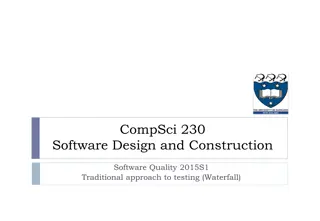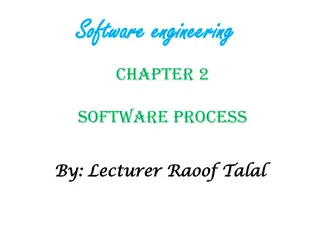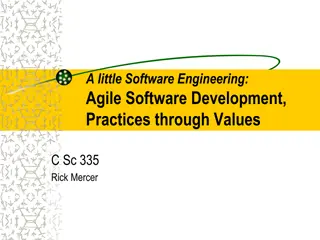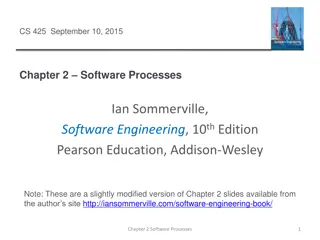Understanding the Waterfall Model in Software Development
The Waterfall Model is a linear-sequential life cycle model for software development. In this model, each phase must be completed before the next can begin, without overlaps. The sequential phases include Requirement Gathering, System Design, Implementation, Integration and Testing, Deployment, and Maintenance. It is suitable for projects with stable requirements and clear definitions. The model offers simplicity, easy manageability, clear stages, and is suitable for smaller projects with well-understood requirements.
Download Presentation

Please find below an Image/Link to download the presentation.
The content on the website is provided AS IS for your information and personal use only. It may not be sold, licensed, or shared on other websites without obtaining consent from the author. Download presentation by click this link. If you encounter any issues during the download, it is possible that the publisher has removed the file from their server.
E N D
Presentation Transcript
SOFTWARE PROCESS MODEL SDLC - Waterfall Model
The Waterfall Model was the first Process Model to be introduced. It is also referred to as a linear-sequential life cycle model. It is very simple to understand and use. In a waterfall model, each phase must be completed before the next phase can begin and there is no overlapping in the phases. The Waterfall model is the earliest SDLC approach that was used for software development. The waterfall Model illustrates the software development process in a linear sequential flow. This means that any phase in the development process begins only if the previous phase is complete. In this waterfall model, the phases do not overlap.
The sequential phases in Waterfall model are Requirement Gathering and analysis All possible requirements of the system to be developed are captured in this phase and documented in a requirement specification document. System Design The requirement specifications from first phase are studied in this phase and the system design is prepared. This system design helps in specifying hardware and system requirements and helps in defining the overall system architecture. Implementation With inputs from the system design, the system is first developed in small programs called units, which are integrated in the next phase. Each unit is developed and tested for its functionality, which is referred to as Unit Testing.
Integration and Testing All the units developed in the implementation phase are integrated into a system after testing of each unit. Post integration the entire system is tested for any faults and failures. Deployment of system Once the functional and non-functional testing is done; the product is deployed in the customer environment or released into the market. Maintenance There are some issues which come up in the client environment. To fix those issues, patches are released. Also to enhance the product some better versions are released. Maintenance is done to deliver these changes in the customer environment.
Waterfall Model - Application Every software developed is different and requires a suitable SDLC approach to be followed based on the internal and external factors. Some situations where the use of Waterfall model is most appropriate are Requirements are very well documented, clear and fixed. Product definition is stable. Technology is understood and is not dynamic. There are no ambiguous requirements. Ample resources with required expertise are available to support the product. The project is short.
Waterfall Model - Advantages Some of the major advantages of the Waterfall Model are as follows Simple and easy to understand and use Easy to manage due to the rigidity of the model. Each phase has specific deliverables and a review process. Phases are processed and completed one at a time. Works well for smaller projects where requirements are very well understood. Clearly defined stages. Well understood milestones. Easy to arrange tasks. Process and results are well documented.
Waterfall Model - Disadvantages The major disadvantages of the Waterfall Model are as follows No working software is produced until late during the life cycle. High amounts of risk and uncertainty. Not a good model for complex and object-oriented projects. Poor model for long and ongoing projects. Not suitable for the projects where requirements are at a moderate to high risk of changing. So, risk and uncertainty is high with this process model. It is difficult to measure progress within stages. Cannot accommodate changing requirements.


